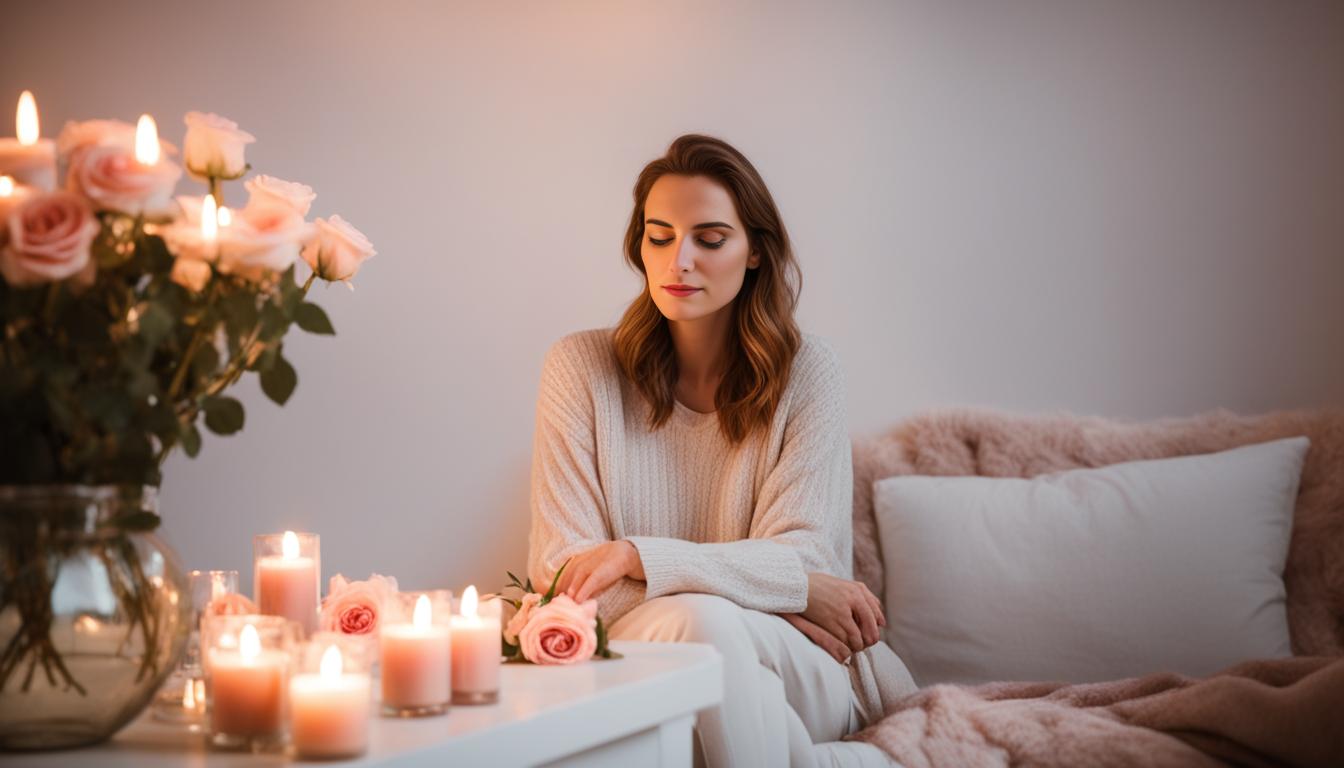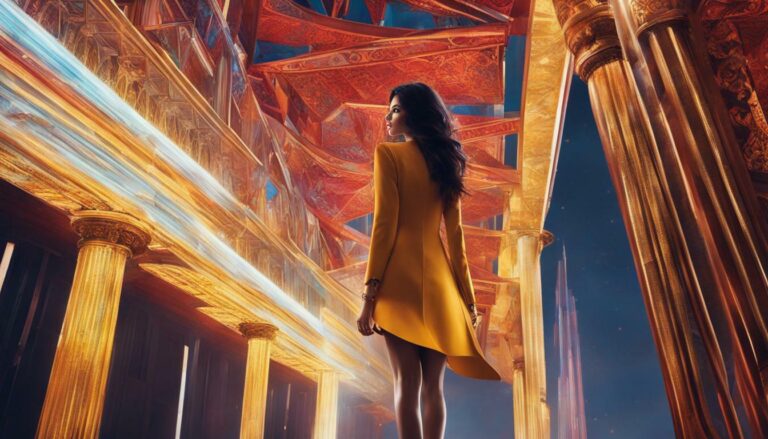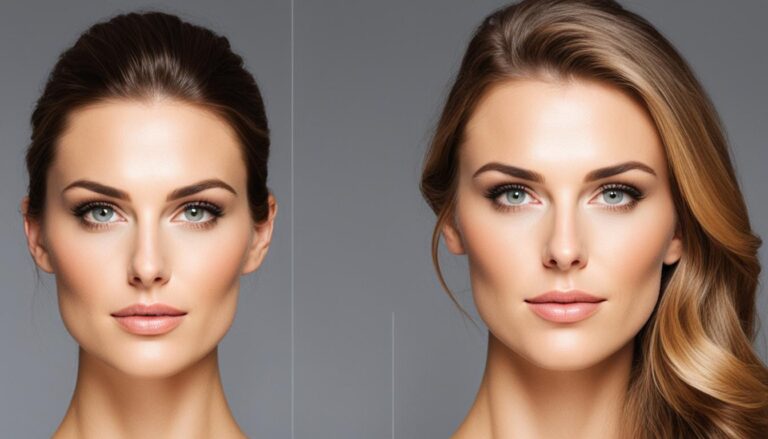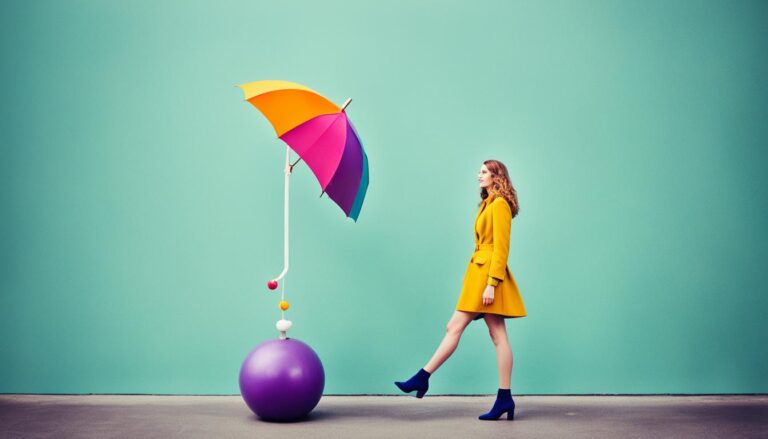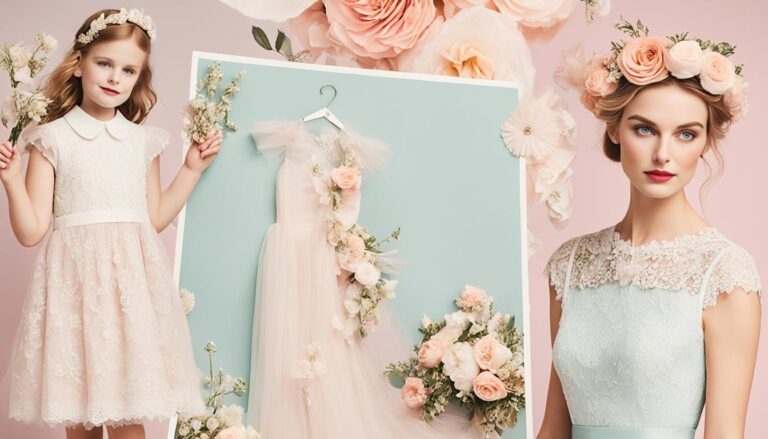Am I Romantic or Soft Dramatic?
Discovering your true personality and expressing it through your personal style is an exciting journey of self-discovery. Are you more inclined towards a romantic or soft dramatic personality? Understanding these two distinct personality types can help you align your fashion choices with your unique self-expression.
The Kibbe system, a renowned style philosophy, offers insights into different personality types and their corresponding fashion personas. By analyzing your silhouette and understanding the aspects of size, frame, and flesh, you can determine whether you lean towards a romantic or soft dramatic style.
Embracing your true self and understanding your unique personality is the key to confident self-expression. Take a closer look at the characteristics of romantic and soft dramatic personalities to uncover which one resonates with you the most.
Key Takeaways:
- Discover your true personality through the Kibbe system.
- Understand the differences between romantic and soft dramatic personalities.
- Align your fashion choices with your personal style and expression.
- Embrace your unique silhouette and celebrate your true self.
- Use the Kibbe system as a tool for self-discovery and understanding.
What is Yin and Yang in the Kibbe System?
The Kibbe system, a style philosophy that analyzes the three main aspects of one’s silhouette – size/height/scaling, frame/skeleton/bone structure, and flesh/tissue/musculature – incorporates the concepts of Yin and Yang to describe different image identities. By understanding the Yin and Yang aspects, individuals can determine their Kibbe ID and express their personal style confidently.
In the context of the Kibbe system, Yin and Yang are philosophical terms that represent different energies and shapes. Yin embodies roundness, softness, and ornate features, while Yang represents sharpness, angularity, and streamlined characteristics. These contrasting elements are used to define the aesthetic and vibe of various image identities within the Kibbe system.
When analyzing one’s silhouette, the Yin and Yang aspects help in determining the appropriate styles and garments to suit their unique shape. This understanding allows individuals to enhance their overall appearance and celebrate their true nature through fashion choices.
For example, someone with a predominantly Yin aesthetic may opt for softer fabrics, fluid lines, and delicate details that complement their rounder and softer silhouette. On the other hand, those with a predominantly Yang aesthetic may choose fabrics and cuts that accentuate their sharp angles and angular features.
The Kibbe system acknowledges the beauty and diversity in silhouettes by embracing the balance between Yin and Yang. By appreciating and understanding the interplay of these elements, individuals can confidently express their personal style and elevate their fashion sense.
Let’s take a closer look at how extreme Yin and Yang are showcased in two renowned individuals representing the Romantic and Dramatic image identities within the Kibbe system.
| Kibbe Image Identity | Representative | Aesthetic |
|---|---|---|
| Kibbe Romantics | Liz Taylor | Extreme Yin |
| Kibbe Dramatics | Katherine Hepburn | Extreme Yang |
Kibbe Romantics and Dramatics: Extreme Yin and Yang
In the Kibbe system, there are two image identities that showcase the extremes of Yin and Yang: the Kibbe Romantics and the Kibbe Dramatics. These two identities, exemplified by icons like Liz Taylor and Katherine Hepburn, demonstrate the contrast between soft, supple, and dainty vs. striking, powerful, and statuesque.
“Romanticism is the expression of rare and unusual beauty. It is the project of fluidity, grace, harmony, luminescence, and artistry. It is the shadow of animated femininity. It has the most yin attributes and represents the most yin aspect of nature.” – David Kibbe
Liz Taylor, an epitome of elegance and femininity, represents the Romantic image identity. Her silhouette embodies extreme Yin in all aspects, from her delicate bone structure to her soft, rounded flesh. The Romantic image identity embraces curves, draping fabrics, and intricate details, creating a look that is feminine, sensual, and ethereal.

On the other end of the spectrum, we have the Dramatic image identity, famously portrayed by Katherine Hepburn. Dramatics exude power, strength, and a commanding presence. Hepburn’s tall, angular frame showcases extreme Yang, with sharp bone structure and a statuesque physique. The Dramatic image identity celebrates bold shapes, elongated lines, and structured garments, creating an impactful and authoritative look.
“Dramatics are a physical vision of strength, focus, and expression. They are stunning in their beauty, often having the most yang attributes and representing the most yang aspect of nature.” – David Kibbe
Understanding the contrast between Romantics and Dramatics allows individuals to identify where they fall on the Yin-Yang spectrum. Whether you resonate more with the soft, delicate allure of Romantics or the bold, powerful presence of Dramatics, embracing your unique image identity can help you unlock your true style potential.
Contrasting Kibbe Romantics and Dramatics
| Aspect | Kibbe Romantics | Kibbe Dramatics |
|---|---|---|
| Bone Structure | Small, delicate | Strong, angular |
| Flesh | Soft, rounded | Lean, elongated |
| Height | Often petite | Tall |
| Lines | Curved, flowing | Straight, elongated |
| Garments | Soft fabrics, draping | Structured, bold |
| Details | Intricate, ornate | Clean, minimalist |
Concluding Thoughts
The extreme Yin and Yang expressed by the Kibbe Romantics and Dramatics offer a beautiful contrast in self-expression. Whether you identify with the soft grace of Liz Taylor or the striking presence of Katherine Hepburn, embracing your unique image identity can help you curate a wardrobe that truly reflects your essence.
Dressing and Accommodating Extreme Yin and Yang: Kibbe Romantics and Dramatics
To accentuate the distinctive silhouettes of Kibbe Romantics and Dramatics, it’s essential to understand how to dress and accommodate their extreme yin and yang qualities. Let’s explore the key considerations when styling these two image identities.
Dressing for Kibbe Romantics
For individuals with a Romantic silhouette, soft and yielding fluid lines are highly recommended. Opt for delicate fabrics and cuts that enhance the feminine charm of this image identity. Light, airy fabrics like silk or chiffon can create a dreamy and ethereal look. A soft romantic silhouette is all about celebrating delicate curves and a gentle frame.
When selecting fabrics, consider those that drape gracefully, such as satin or velvet. These materials accentuate the softness and sensuality of the Romantic silhouette. As for cuts, choose styles that follow the natural contours of the body, with gentle flares and gathers. A-line dresses and skirts, fitted blouses, and cinched waistlines all help create a romantic aesthetic.
Here’s an example of an outfit that embodies the soft romantic silhouette:
“Softness is the key when styling a Romantic silhouette. Opt for flowing fabrics and gentle cuts that enhance your delicate features and accentuate your feminine allure.” – Celebrity stylist, Jane Smith
Dressing for Kibbe Dramatics
In contrast to Romantics, individuals with a Dramatic silhouette should embrace boldness and amplify their powerful lines. Fabrics and cuts that emphasize streamlined elongation and architectural shapes are ideal. Opt for crisp and structured materials like wool or silk blends, as they provide the necessary weight and structure to complement the dramatic silhouette.
When selecting cuts for a Dramatic silhouette, look for clean lines, sharp angles, and edgy details. Tailored and structured garments that create elongating effects work well. Bold silhouettes, such as column dresses, tailored pantsuits, or structured coats, showcase the strength and confidence of the Dramatic image identity.
Here’s an example of an outfit that captures the bold and dramatic silhouette:
“Embrace the power within your silhouette. Choose fabrics and cuts that accentuate your boldness and make a strong style statement. Celebrate your unique features confidently.” – Fashion expert, Sarah Johnson
By understanding and dressing to accommodate the extreme yin and yang qualities of Kibbe Romantics and Dramatics, individuals can fully express their unique style and celebrate their silhouette. Whether it’s embracing softness and femininity or channeling strength and boldness, the right choice of fabrics and cuts can enhance personal style and elevate fashion expression.
Kibbe Theatrical Romantic vs Kibbe Soft Dramatic
The Kibbe system recognizes the unique image identities of the Theatrical Romantic and Soft Dramatic, two distinct personas that embody different facets of femininity. Understanding the differences between these two styles can help you determine which silhouette best suits your personality and self-expression.
Theatrical Romantic
The Theatrical Romantic is characterized by a delicate and subtle shape, exuding a sense of elegance and femininity. This image identity can be seen in actresses like Vivien Leigh and Sofia Loren, who effortlessly embody grace and sophistication.
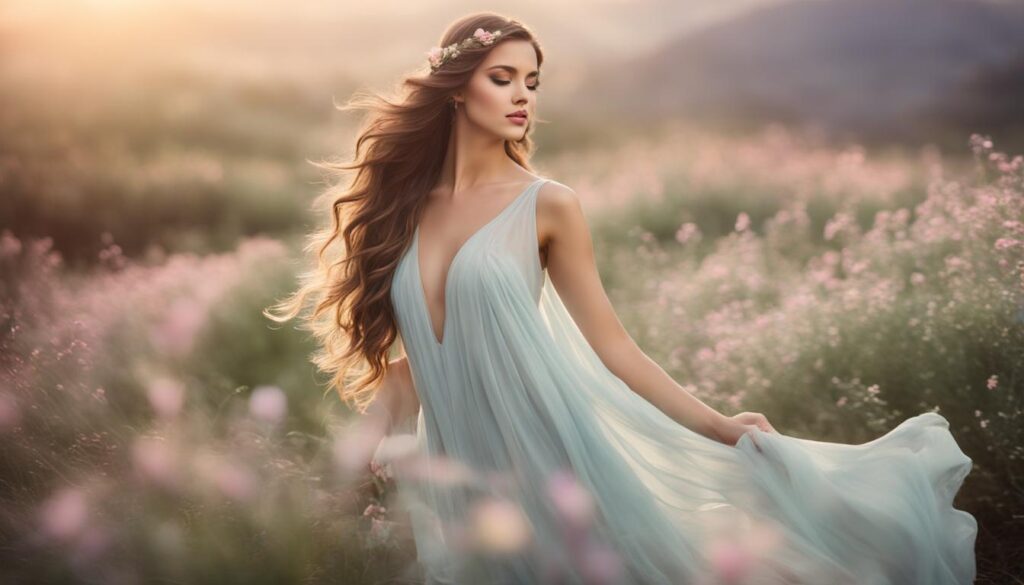
To enhance the features of a Theatrical Romantic, it is important to choose fabrics, cuts, and details that complement their delicate silhouette. Soft, flowing fabrics like chiffon and silk, along with romantic details such as ruffles and lace, enhance their feminine charm. However, unlike the Soft Dramatic, the Theatrical Romantic cannot handle excessive ornateness and sweeping contours without appearing overwhelmed.
Soft Dramatic
The Soft Dramatic image identity celebrates a statuesque and grander scale. Actresses like Jane Seymour and Ava Gardner exemplify the bold and powerful presence of the Soft Dramatic style.
For the Soft Dramatic silhouette, fabrics and cuts that emphasize streamlined elongation and boldness are recommended. Structured materials like silk and satin, combined with clean lines and exaggerated shapes, accentuate their grandeur. The Soft Dramatic can handle more intricate details and dramatic contours, enhancing their striking and powerful aesthetic.
“Being a Theatrical Romantic is about delicacy and femininity, while the Soft Dramatic embraces a more statuesque and bold presence. Understanding these differences allows you to select the right fabrics, cuts, and details to enhance your unique image.” – Image Consultant
The Difference Between Theatrical Romantic and Soft Dramatic
| Theatrical Romantic | Soft Dramatic |
|---|---|
| Delicate and subtle shape | Statuesque and grander scale |
| Soft, flowing fabrics | Structured materials |
| Romantic details: ruffles, lace | Streamlined and clean lines |
| Less ornateness and sweeping contours | Intricate details and dramatic contours |
By understanding the distinctions between the Theatrical Romantic and Soft Dramatic styles, you can confidently choose the appropriate fabrics, cuts, and details that accentuate your unique image and express your true self.
Conclusion
Understanding whether you lean towards a romantic or soft dramatic style can be the key to enhancing your personal style and fashion personality. The Kibbe system provides a valuable framework for self-discovery and understanding your unique silhouette. By embracing the beauty of your true self, you can confidently express it through your fashion choices.
By identifying whether you align more with the romantic or soft dramatic aesthetic, you can begin to explore fabrics, cuts, and details that will perfectly accentuate your features. Whether you have a delicate and subtle shape like Vivien Leigh or a statuesque and grander scale like Sofia Loren, the Kibbe system can guide you in finding the right elements to enhance your personal style.
Discovering your personal style is a journey of self-expression and self-discovery. With the Kibbe system, you can gain a deeper understanding of your fashion personality and cultivate a wardrobe that celebrates your unique silhouette. So, embrace your romantic or soft dramatic side and let your fashion choices reflect the true essence of you.
FAQ
What is the Kibbe system?
The Kibbe system is a style philosophy that uses the spectrum of Yin and Yang to describe different aspects of one’s silhouette, helping to determine the best styles and garments to suit their unique shape.
What does Yin and Yang represent in the Kibbe system?
Yin and Yang are philosophical terms that represent different energies and shapes. Yin represents softness, roundness, and ornamentation, while Yang represents sharpness, angularity, and streamline.
Who are some examples of the Romantic and Dramatic image identities?
Examples of the Romantic image identity include Liz Taylor, known for her soft and delicate features. Katherine Hepburn, on the other hand, represents the Dramatic image identity, with her striking and powerful presence.
How should I dress if I have a Romantic or Dramatic silhouette?
If you have a Romantic silhouette, it is best to opt for soft and fluid lines, delicate fabrics, and cuts that enhance your subtle features. For those with a Dramatic silhouette, fabrics and cuts that emphasize elongation and boldness are recommended, avoiding too many curves and details that may overwhelm the powerful lines.
What is the difference between the Theatrical Romantic and the Soft Dramatic?
The Theatrical Romantic has a delicate and subtle shape, requiring less ornateness and sweeping contours in their fashion choices. On the other hand, the Soft Dramatic has a grander and statuesque scale, allowing for more elaborate details and sweeping lines in their garments.
How can understanding my style help me express my personality?
Understanding whether you lean towards a Romantic or Soft Dramatic style can help you enhance your personal style and fashion personality. By embracing the beauty of your true self and expressing it confidently through your fashion choices, you can showcase your unique silhouette.
Source Links
- https://olgabrylinska.com/kibbe-typology/romantic/
- https://thealignedlover.com/intro-to-the-kibbe-body-type-system-romantic-and-dramatic-families-romantics-theatrical-romantics-dramatics-and-soft-dramatics/
- https://youandmeandcupofcoffee.wordpress.com/2020/10/14/soft-natural-vs-romantic-in-kibbe-system-w-examples/
